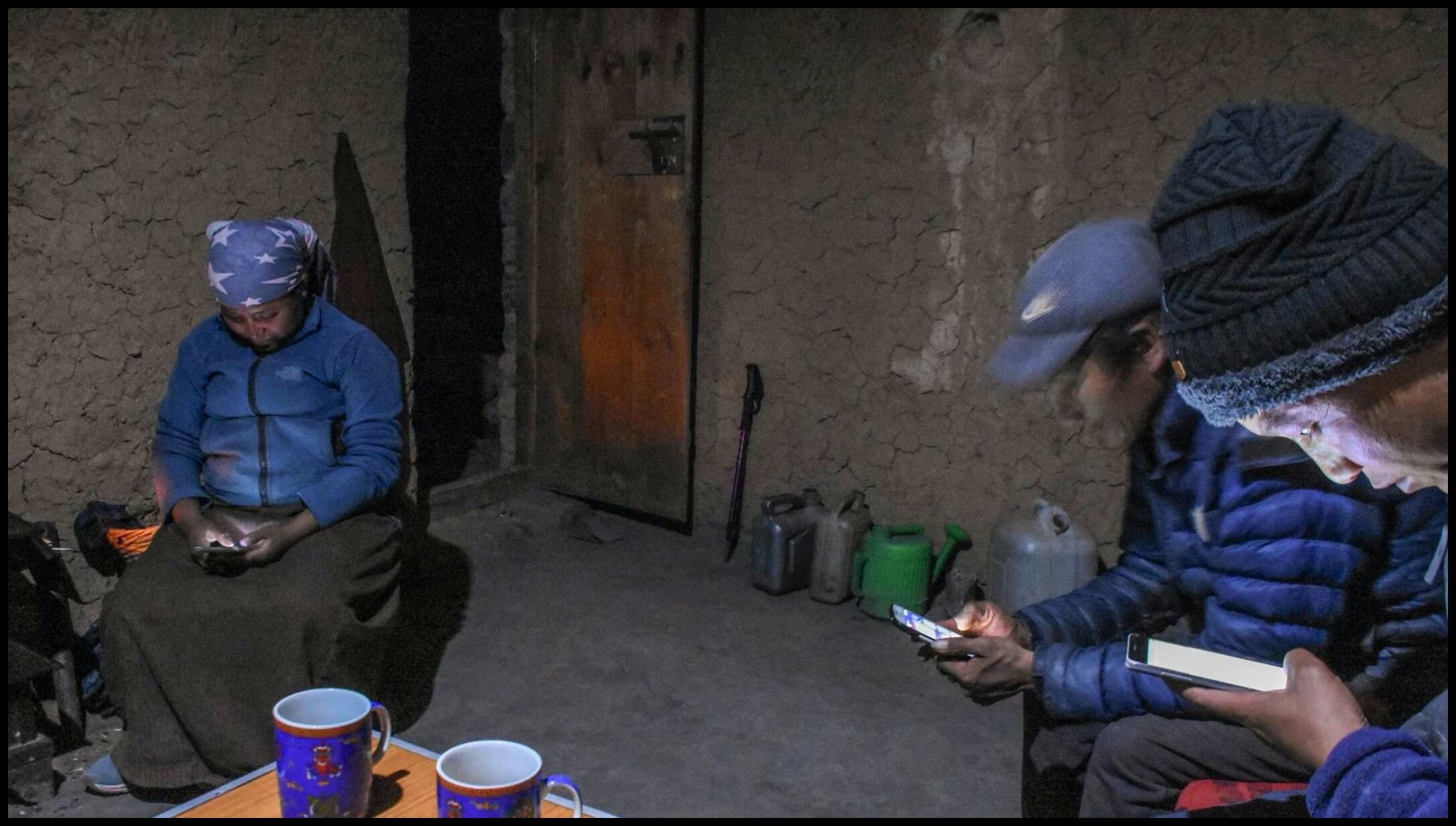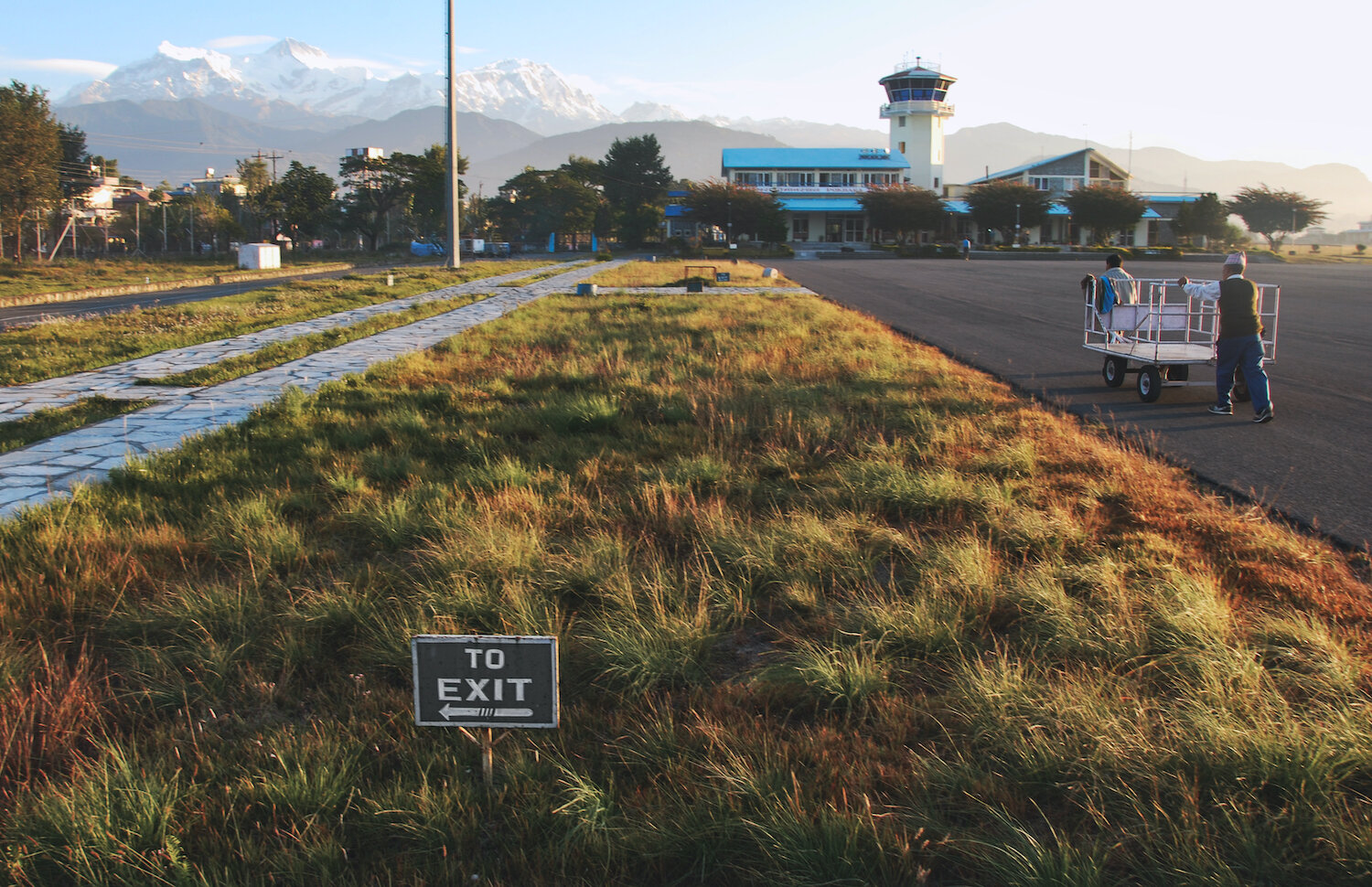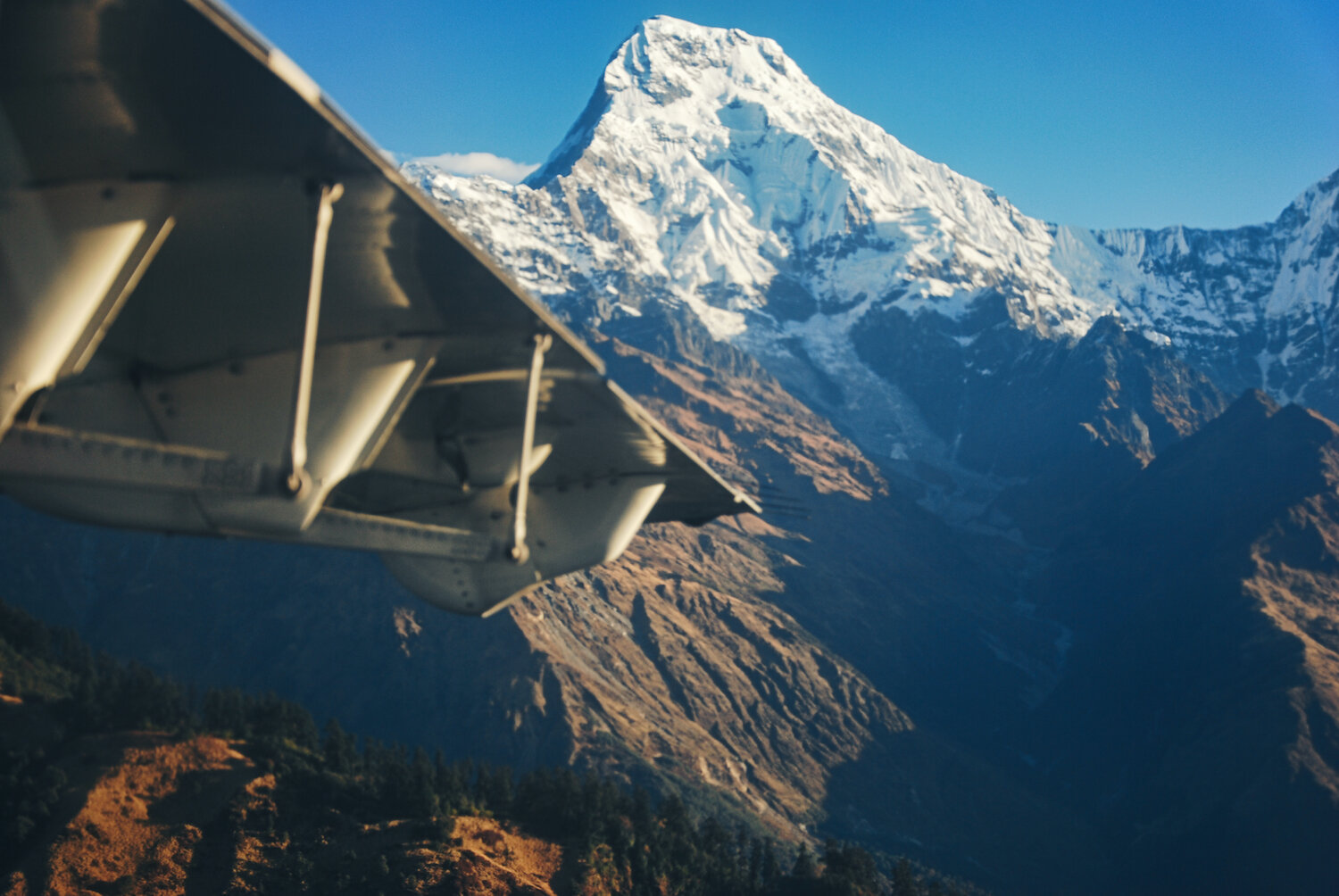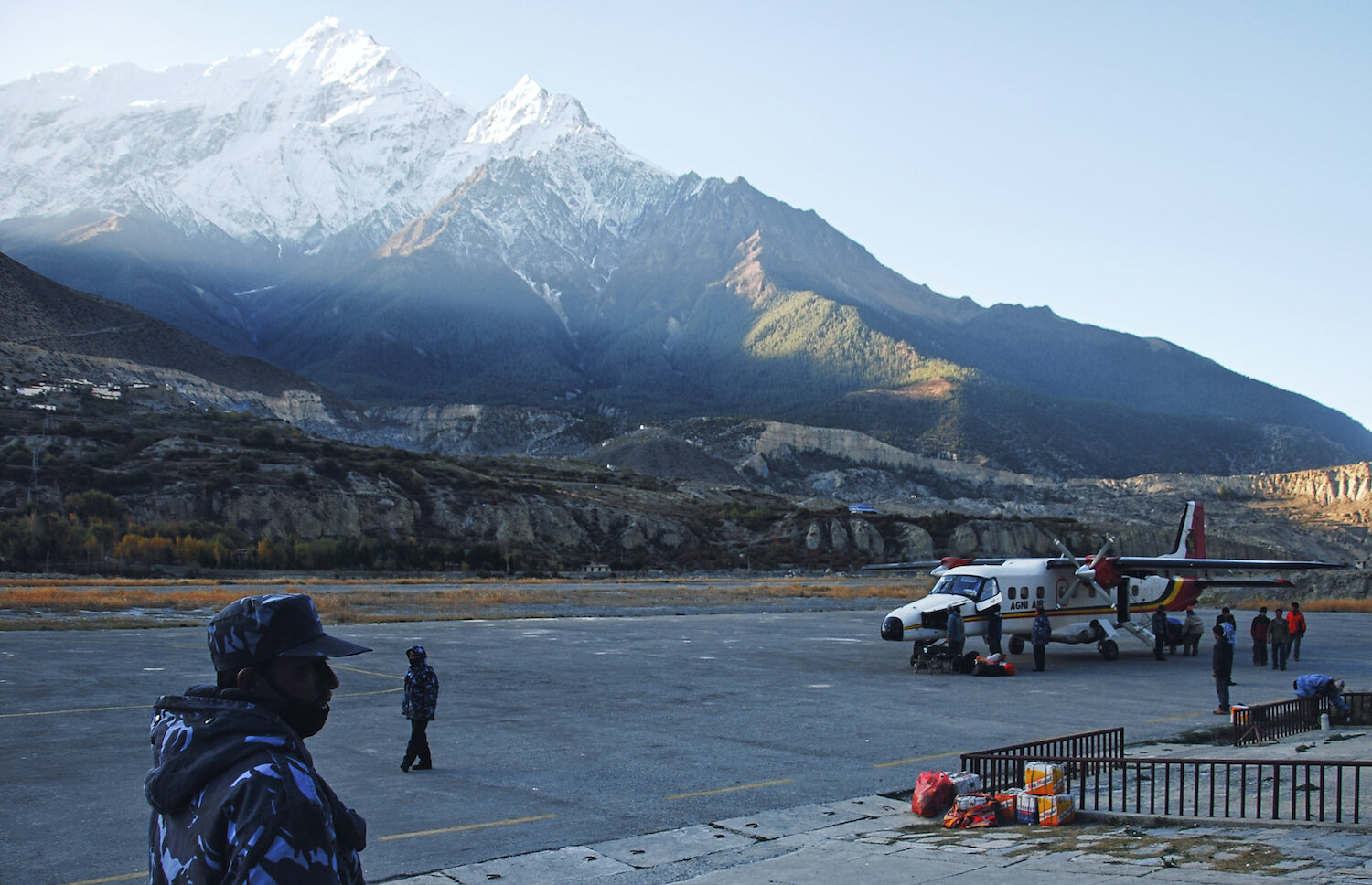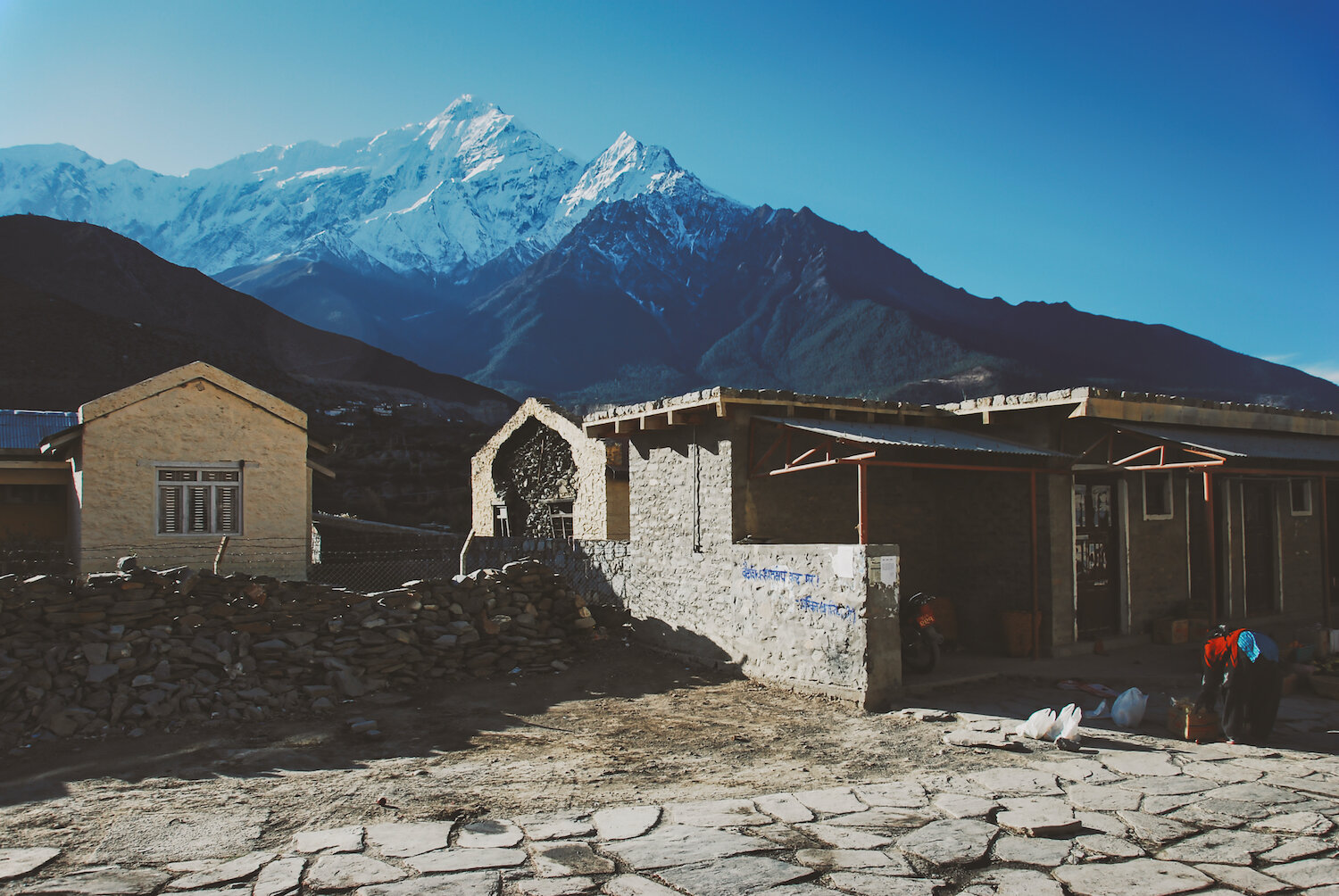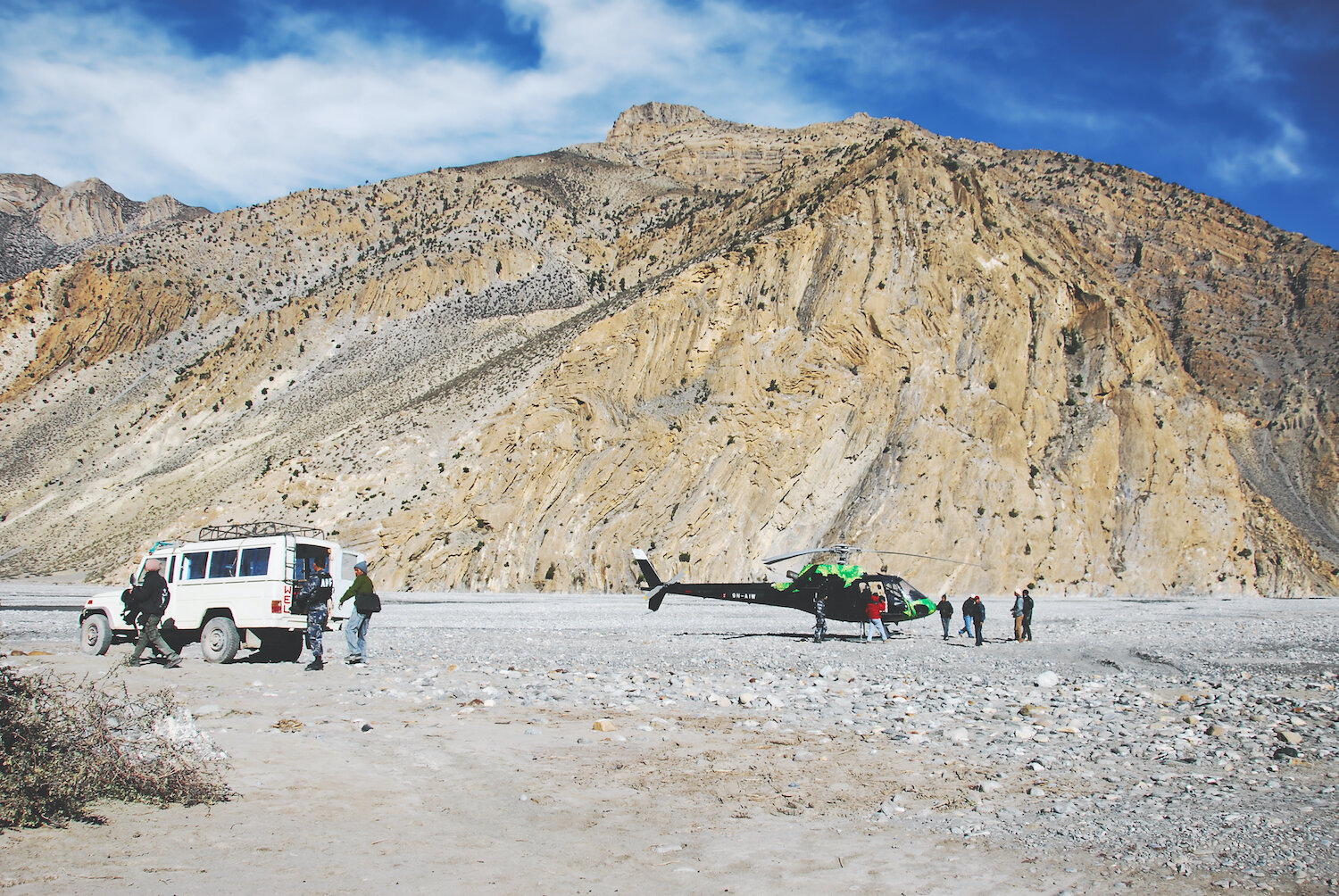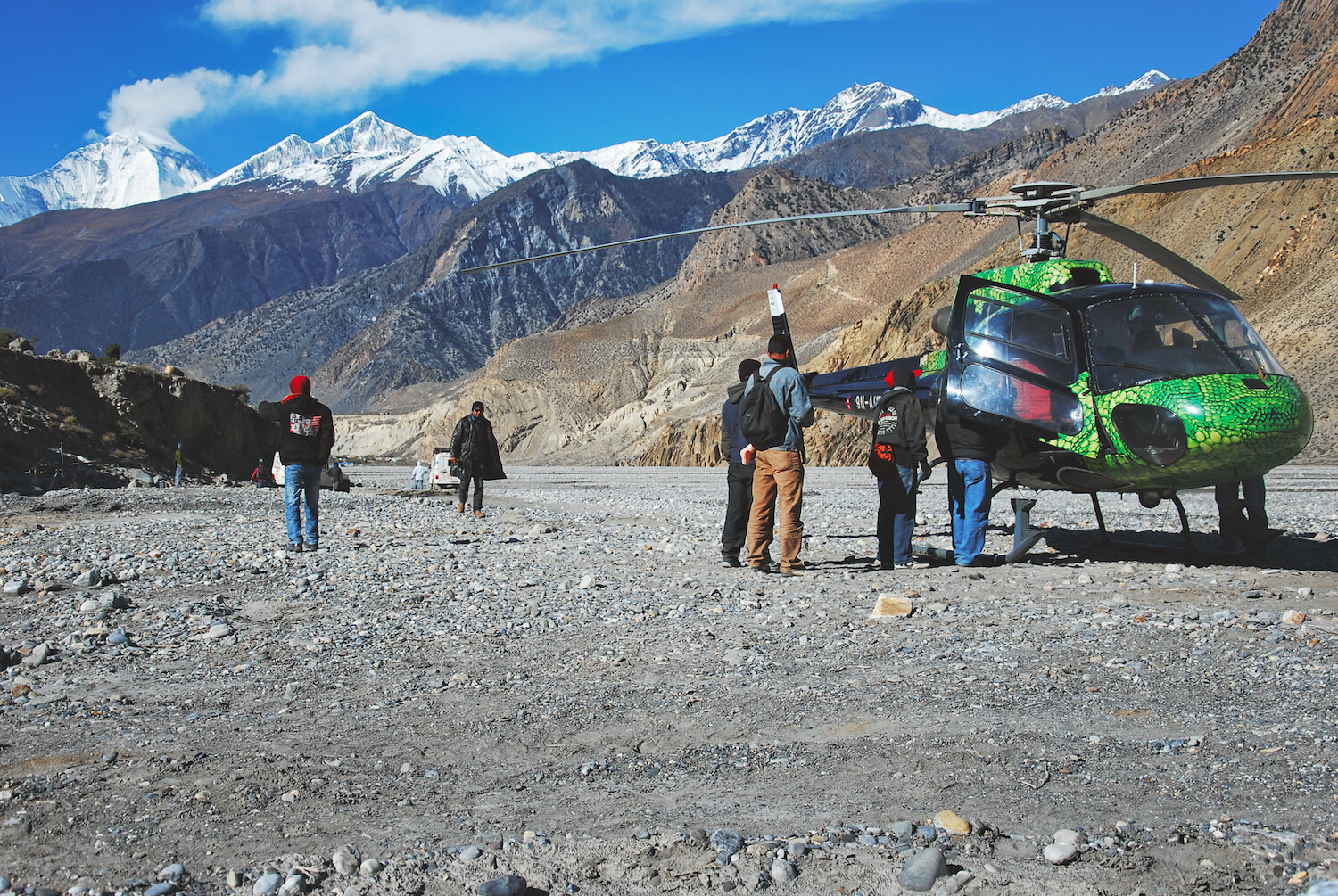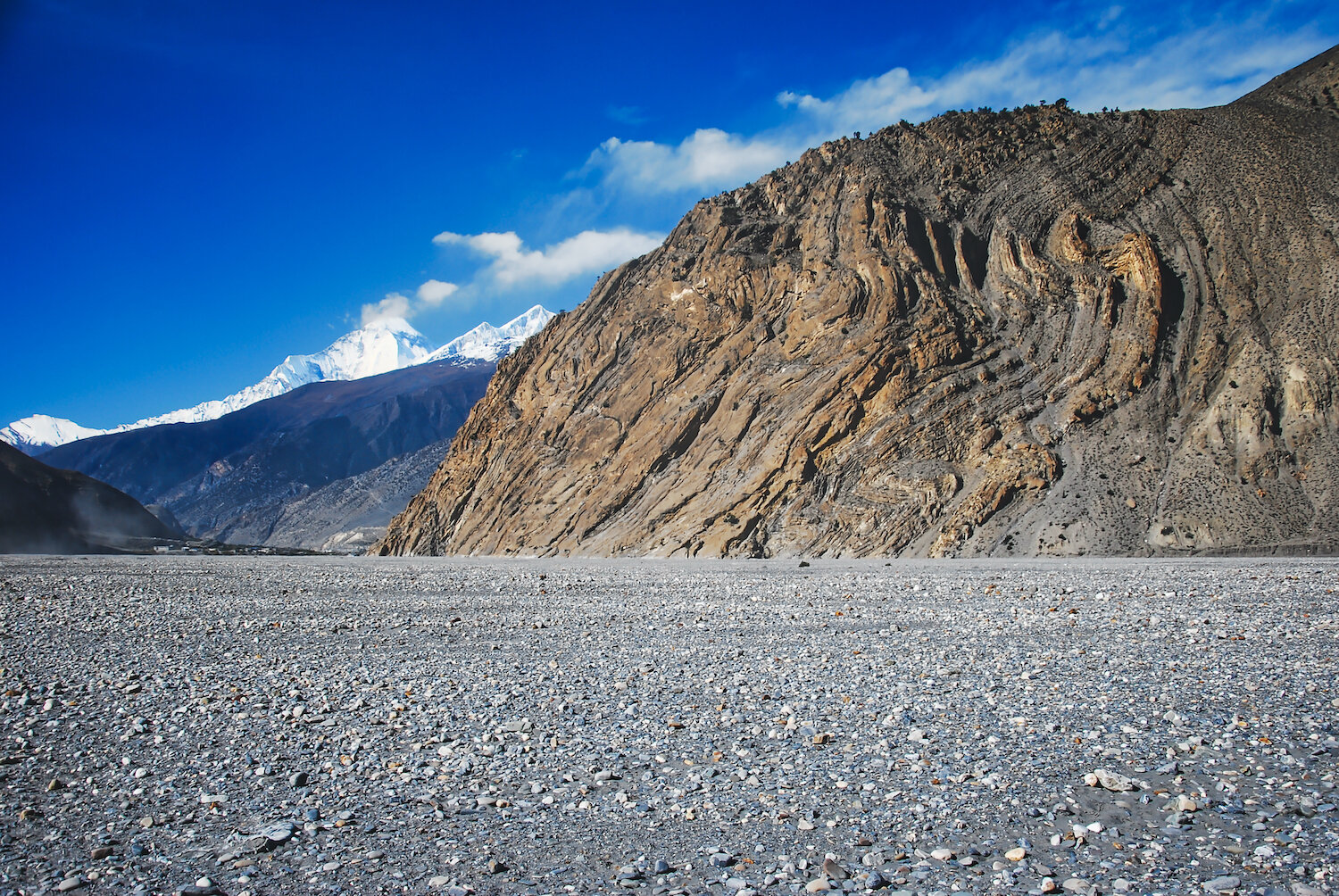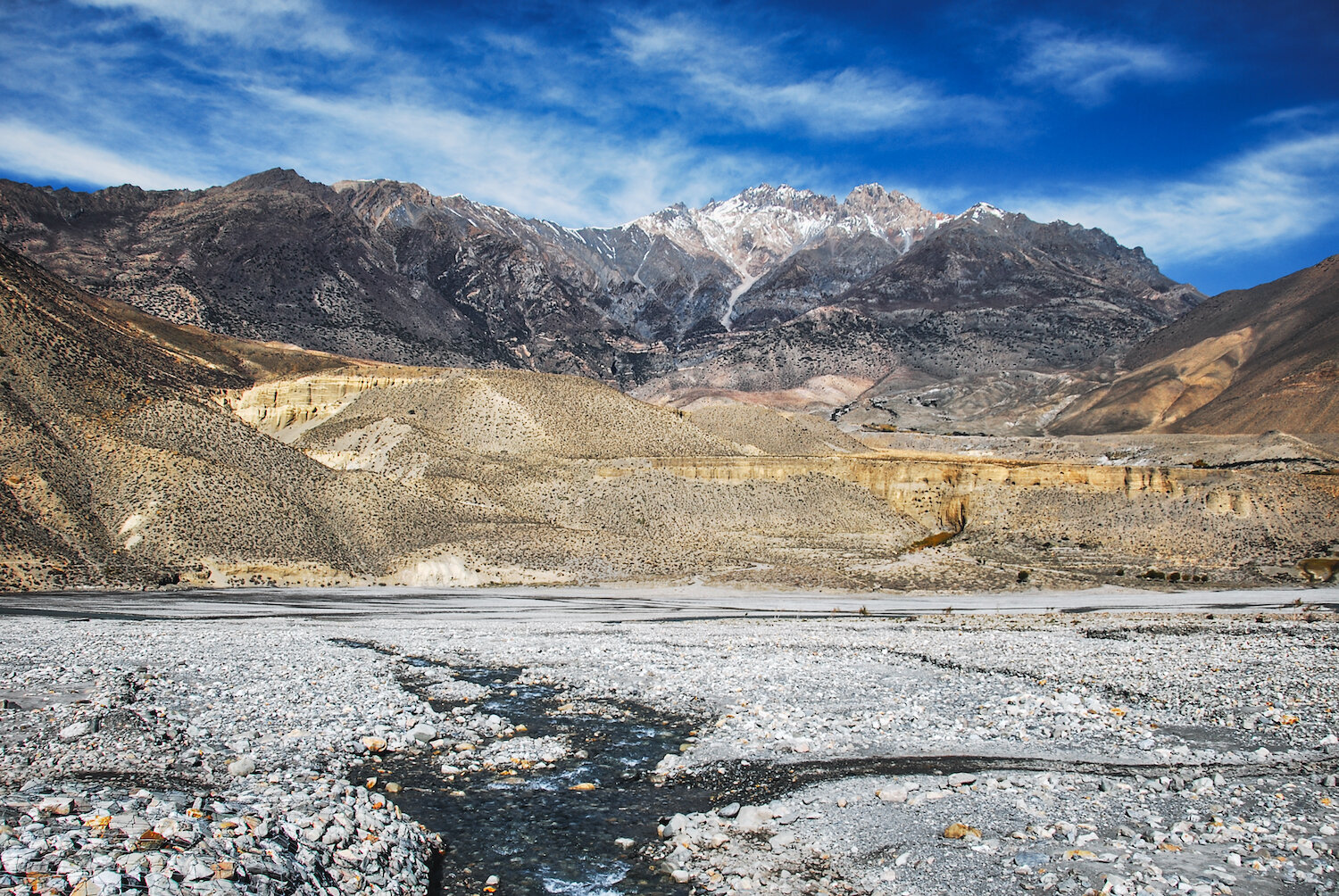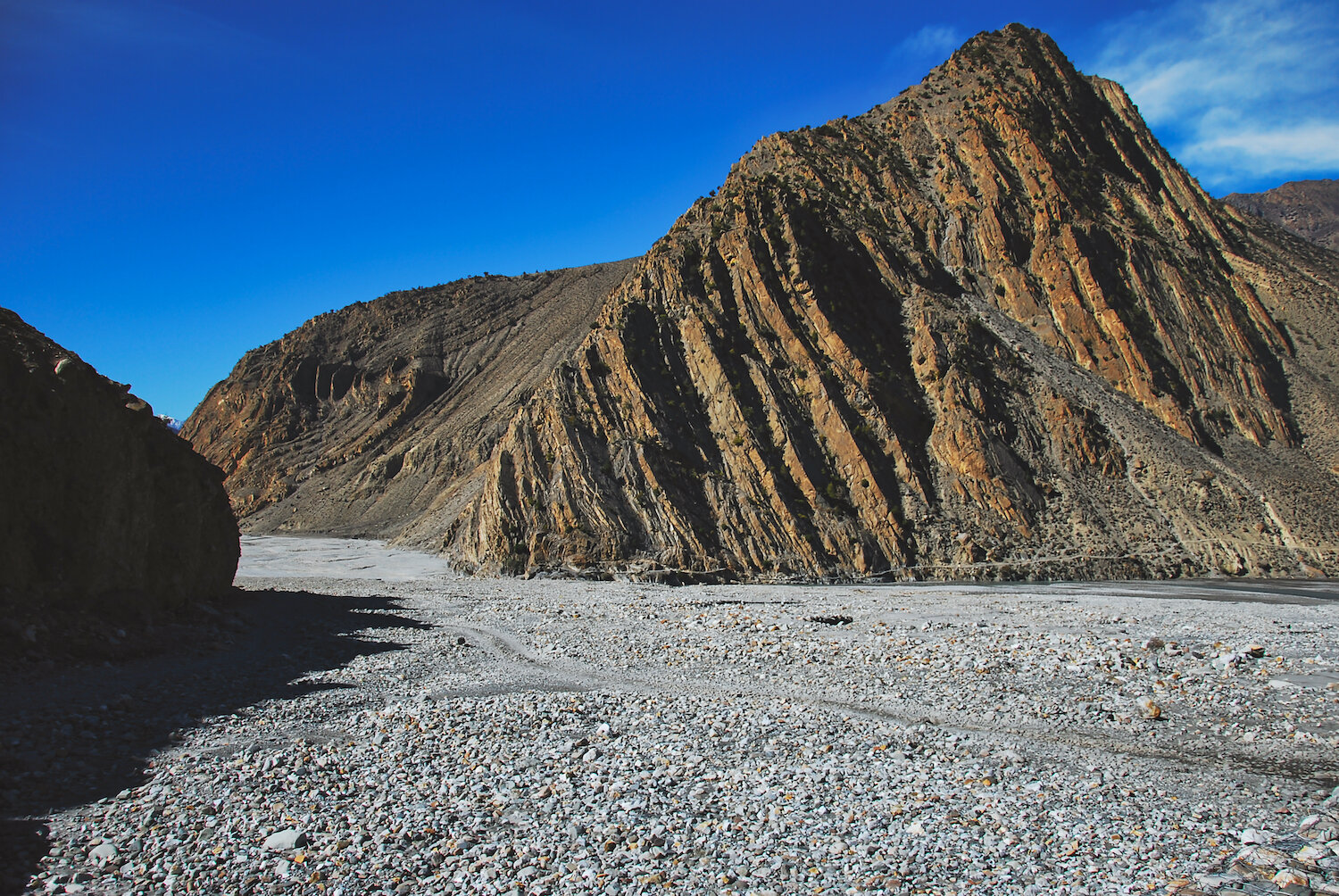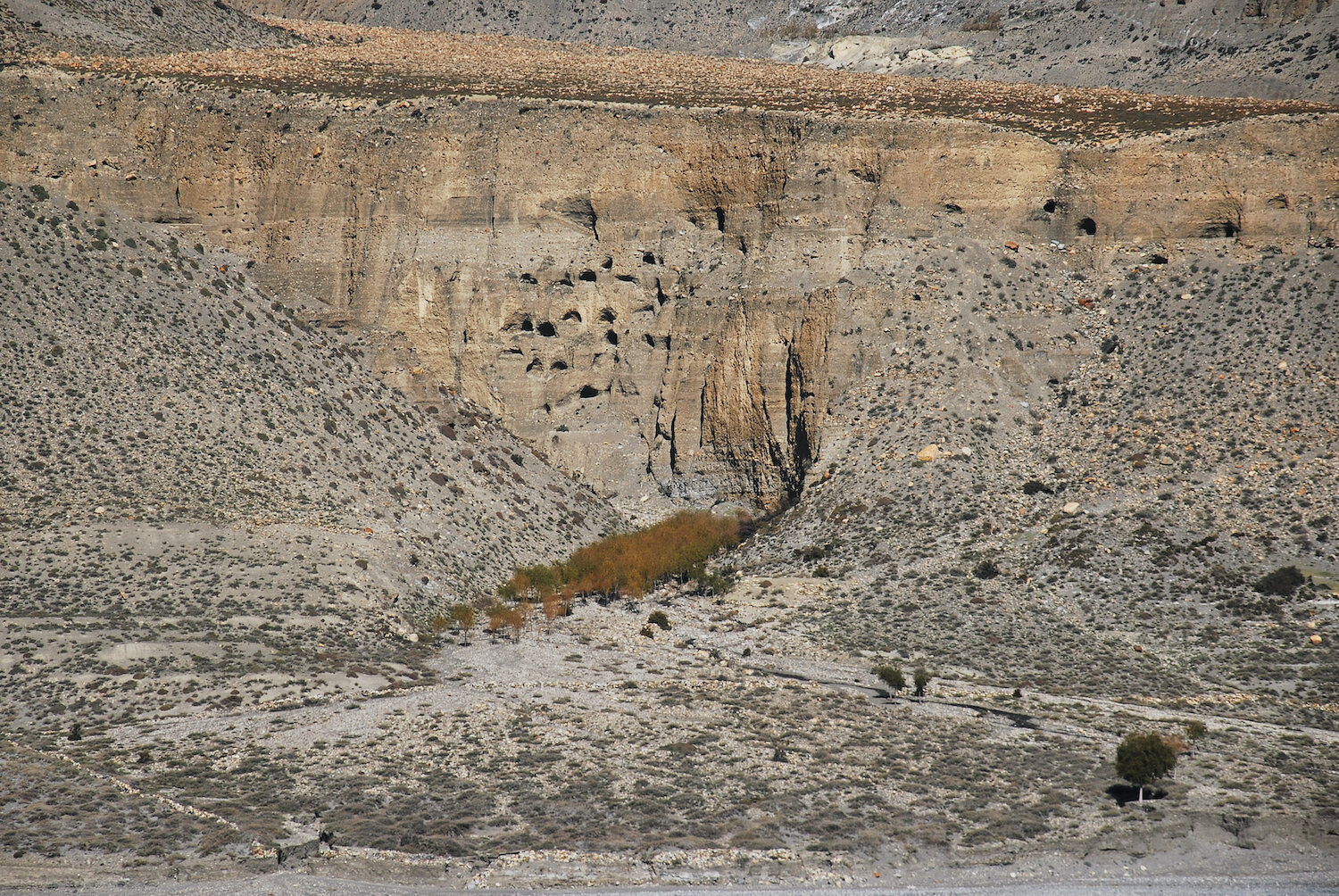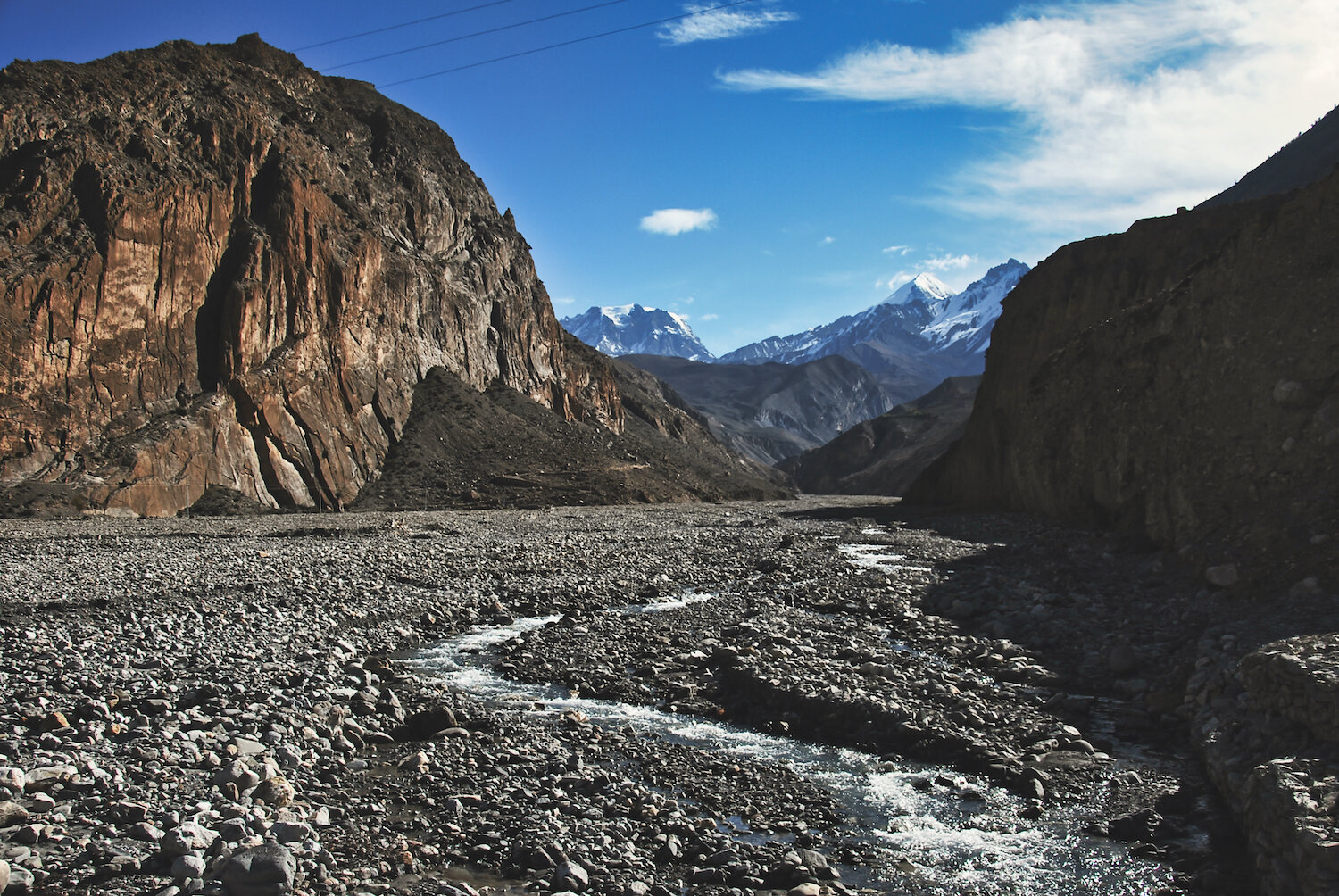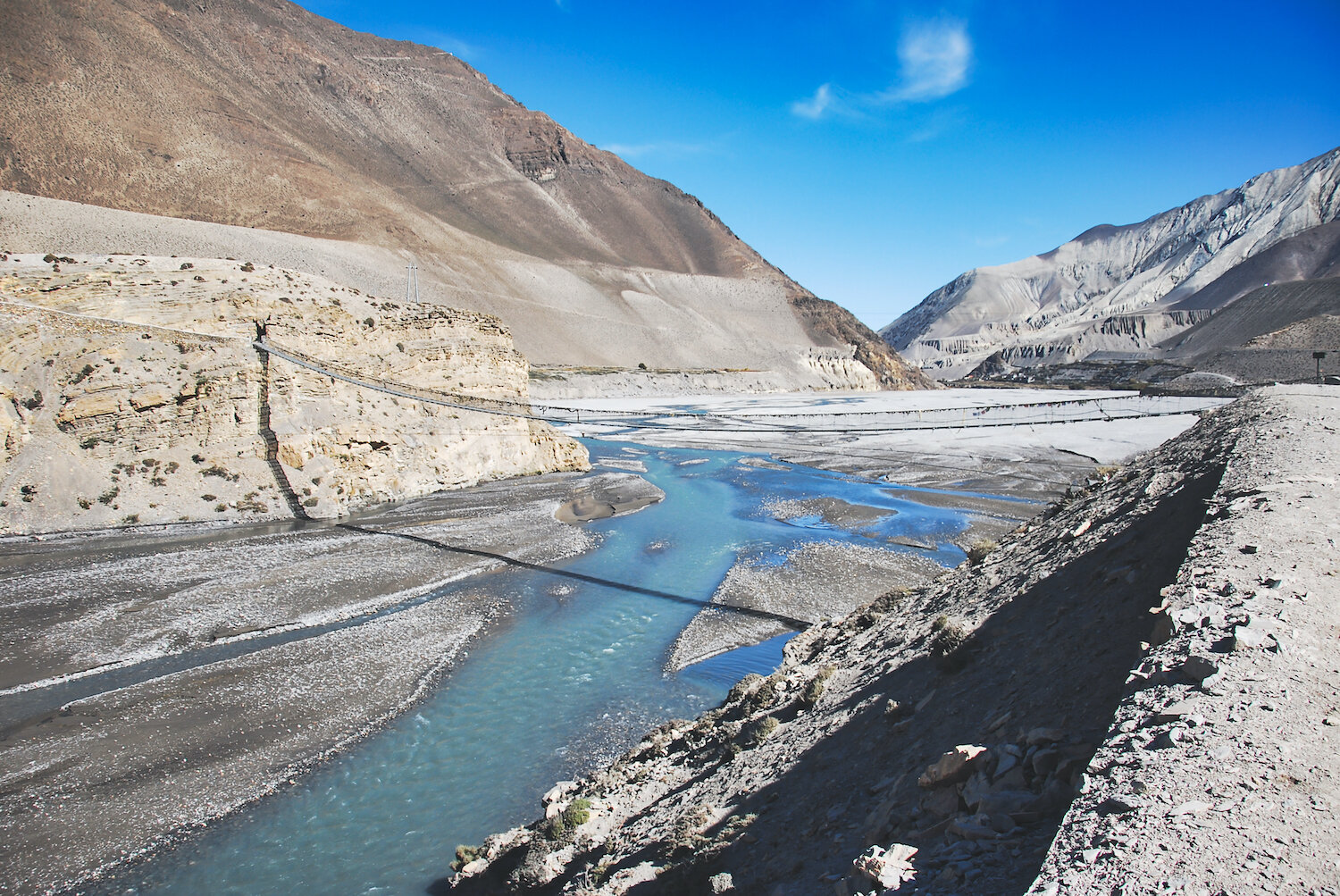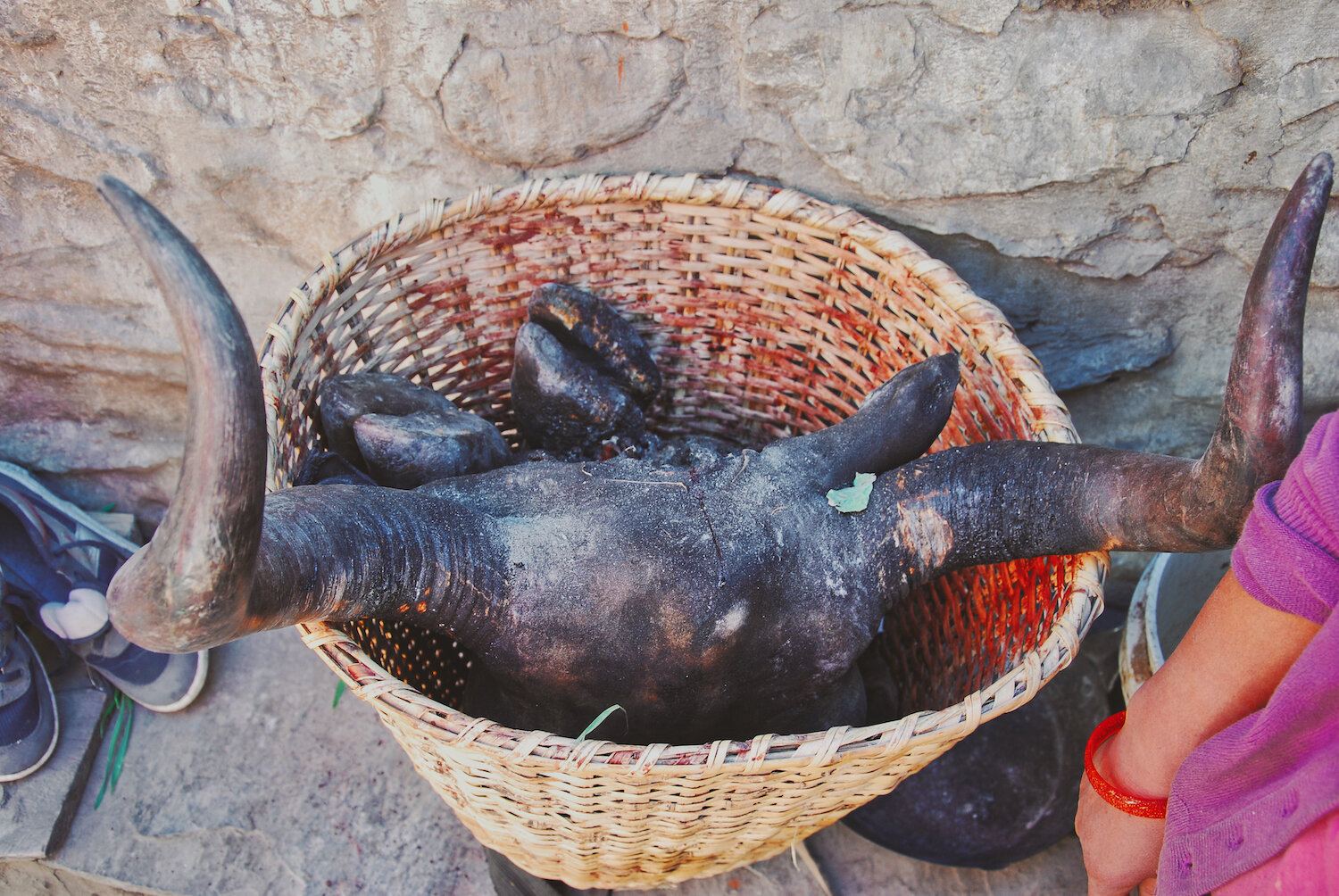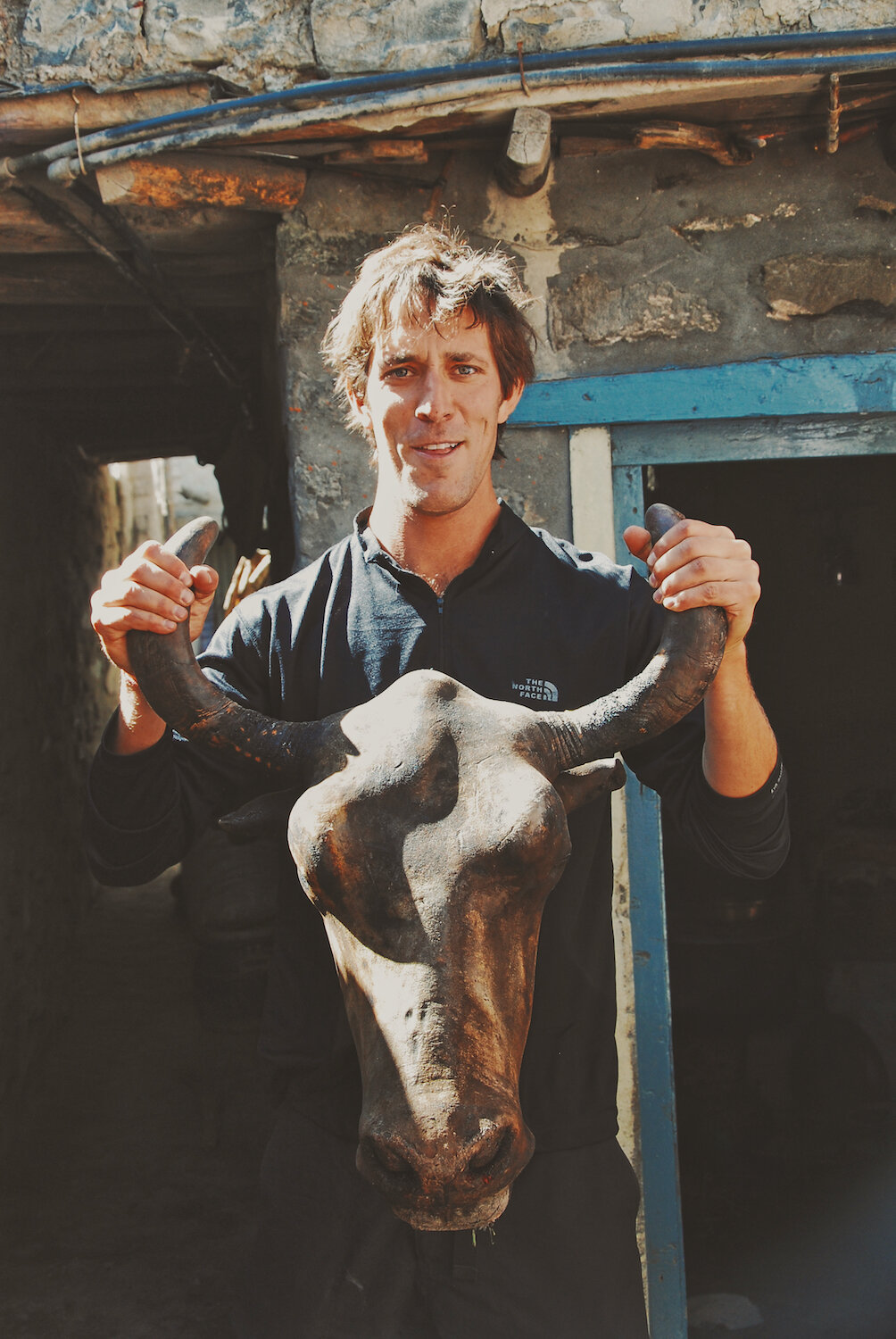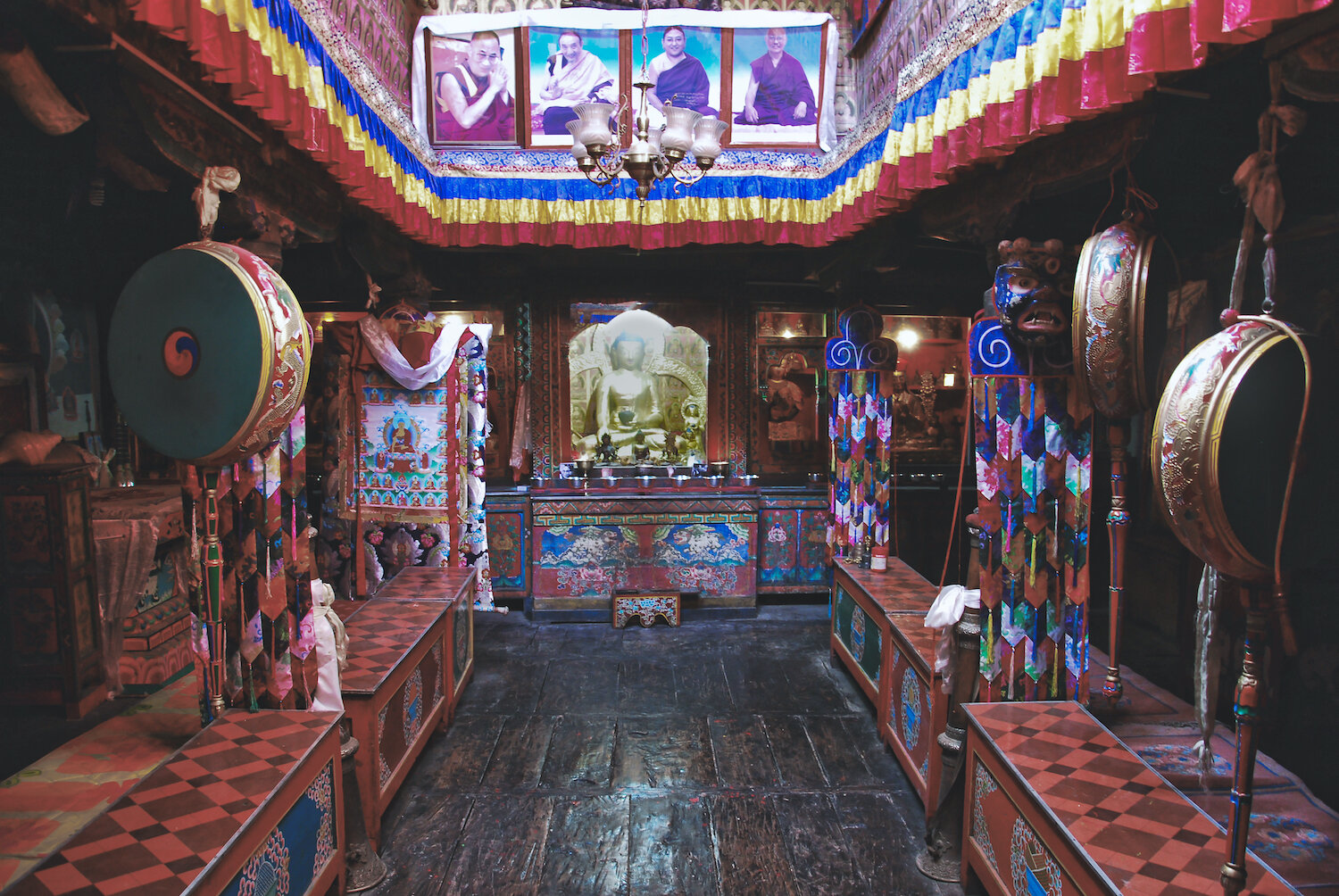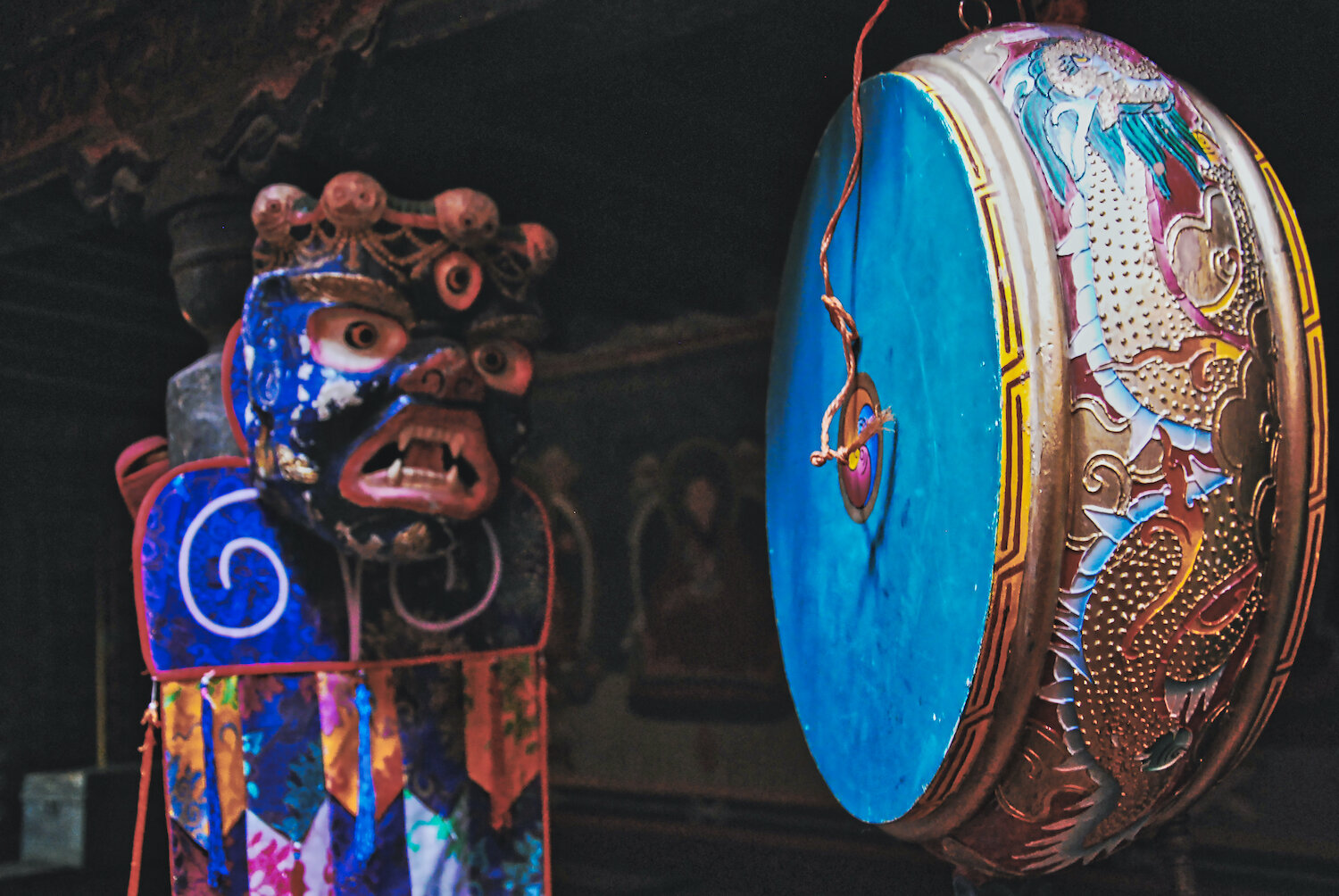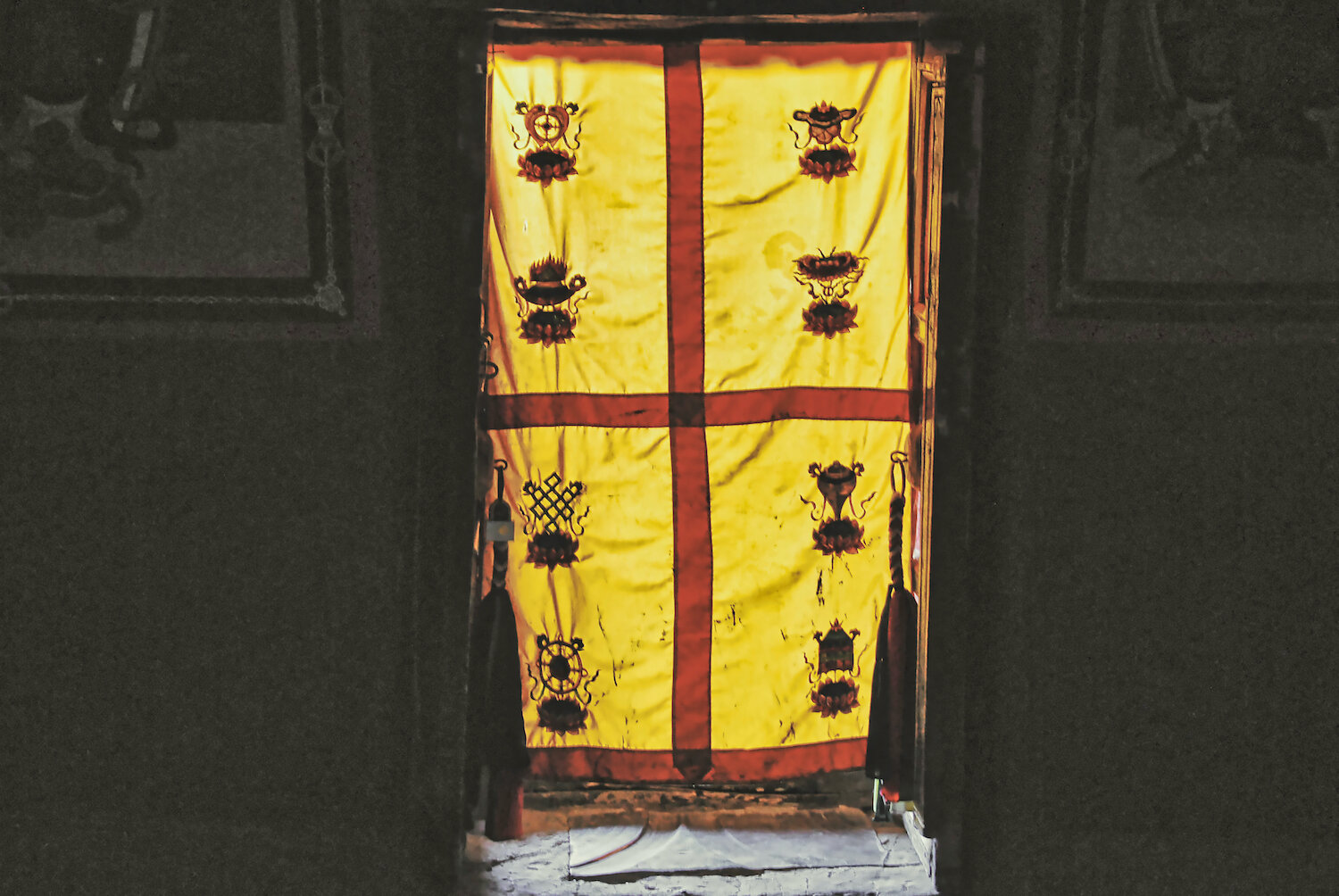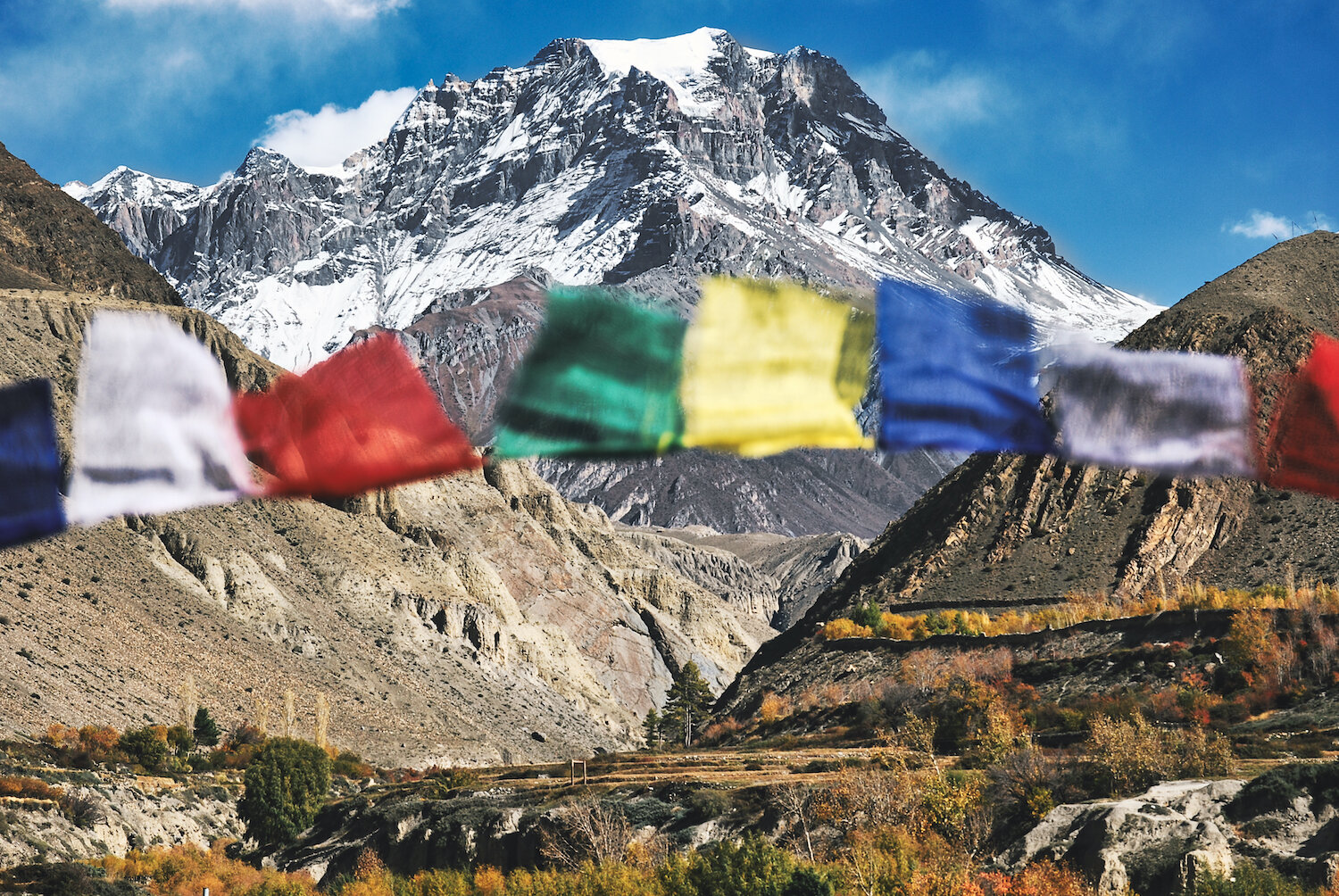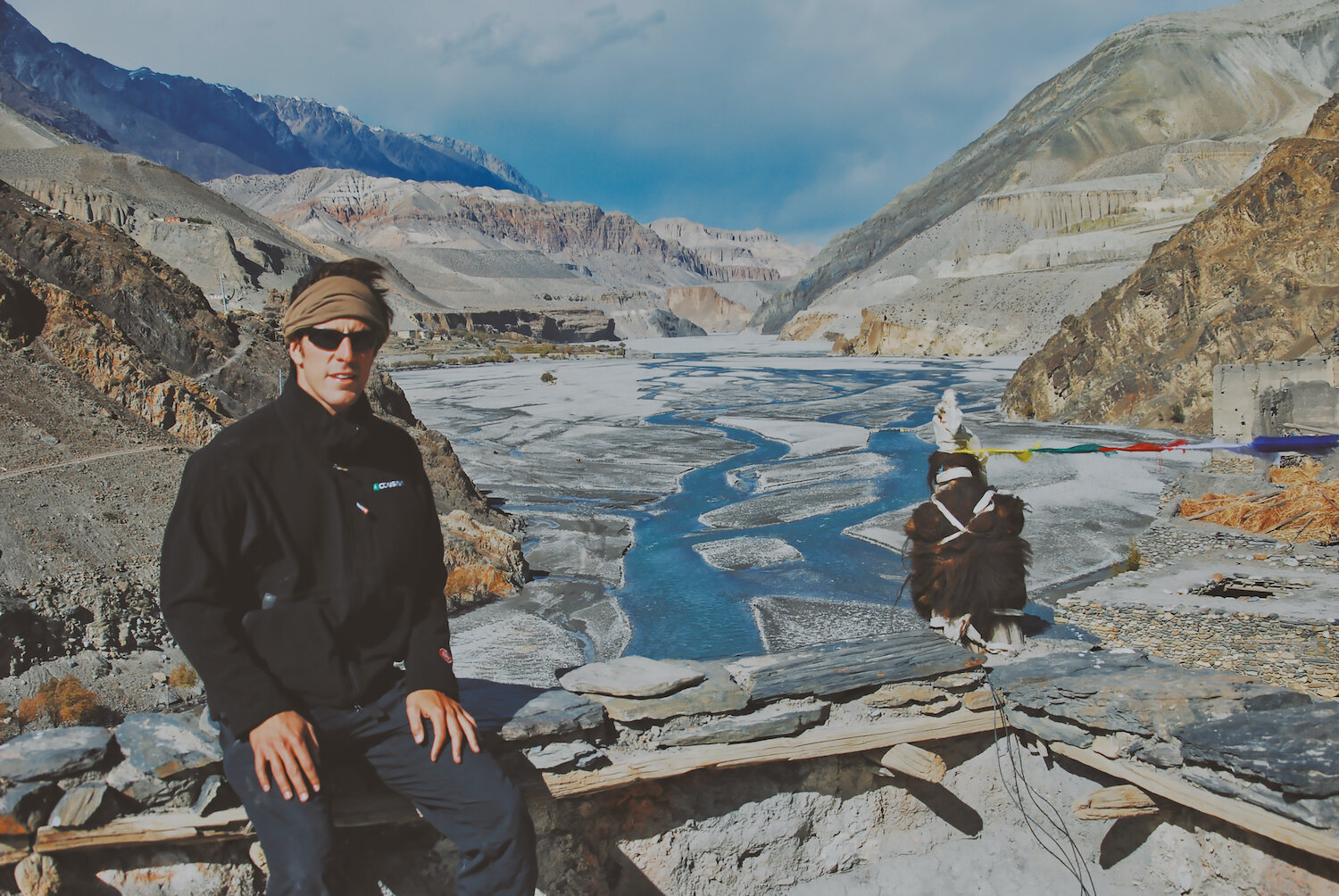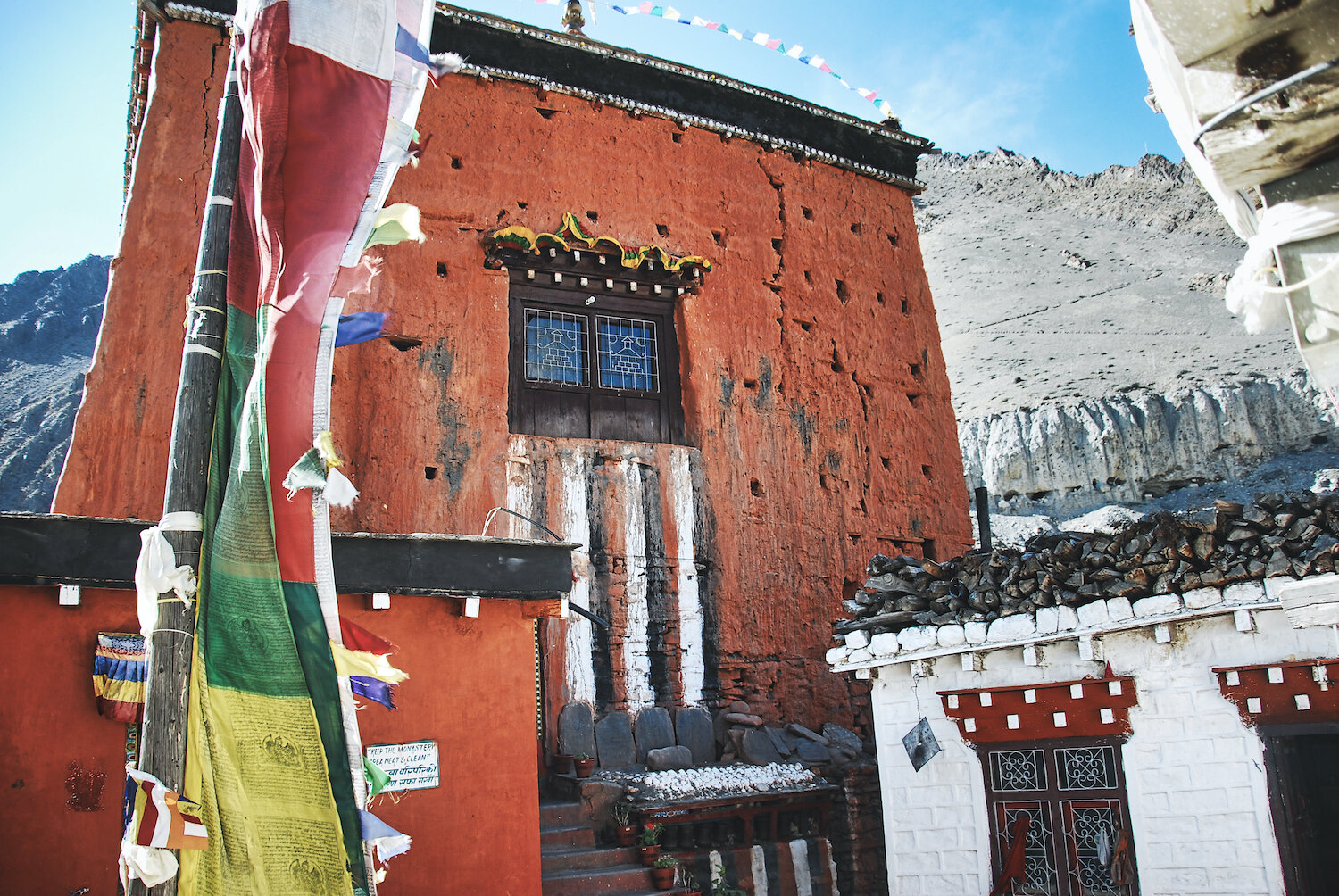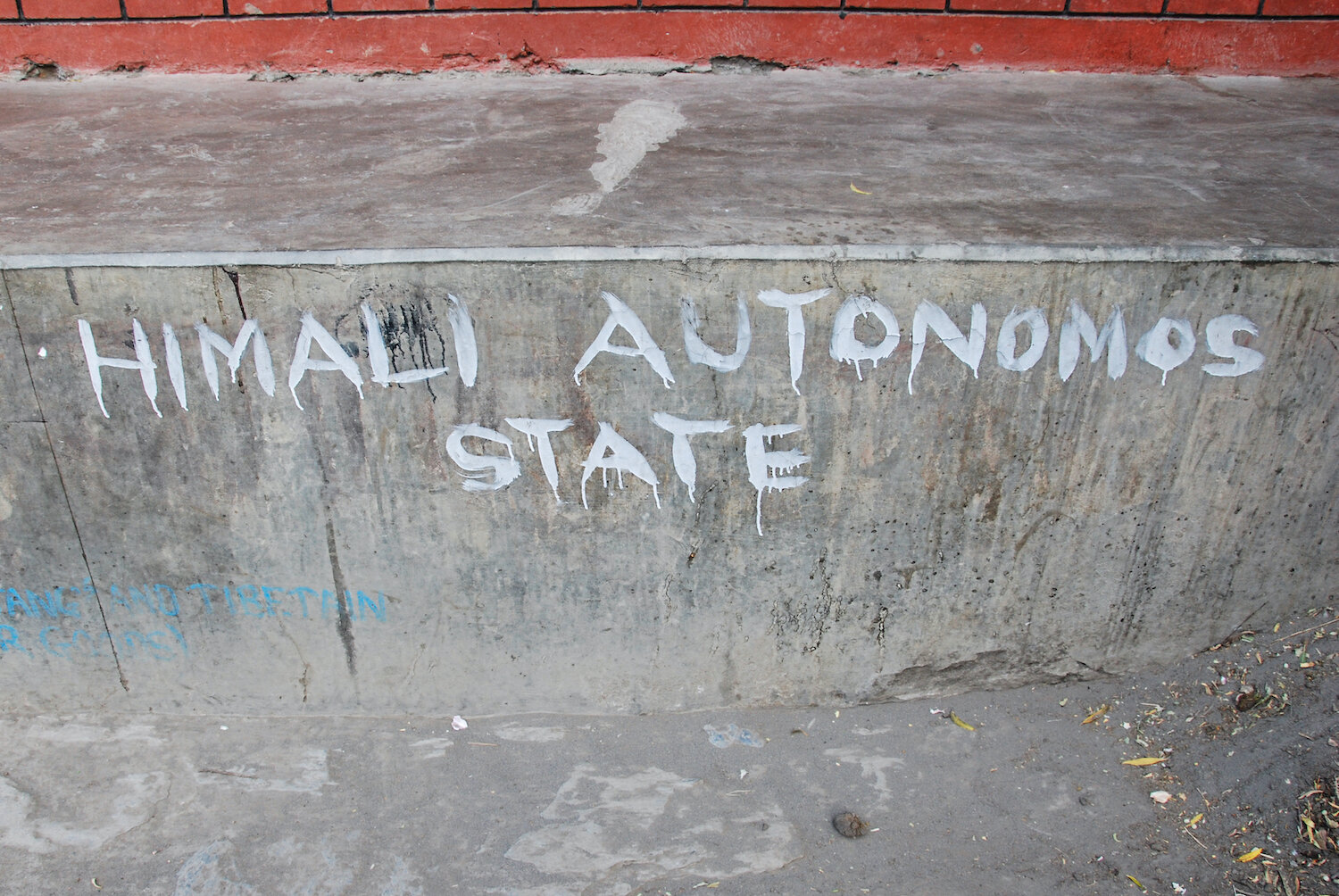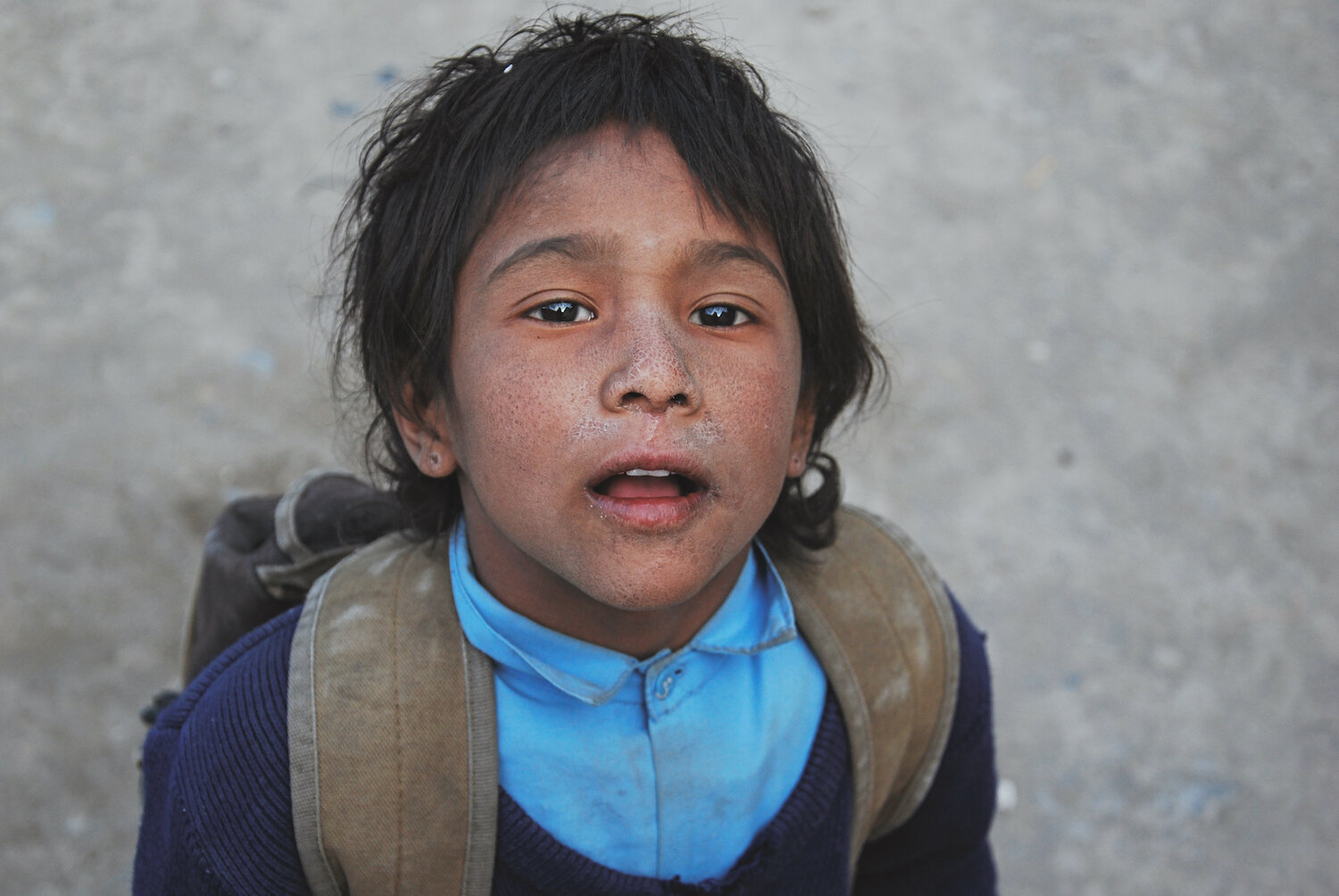91 - The Kingdom of Lo (Mustang, Nepal) — Part I
THE “LAST FORBIDDEN KINGDOM.” FORBIDDEN? Well, not exactly, but you get the picture. They kept the world out for as long as they could, but times they are a changing. I was hooked the second I got a whiff of the place. And like any addict, it was time to feed my addiction.
“Mustang (from the Tibetan möntang (Wylie: smon-thang), Nepali: मुस्तांग Mustāṃg "fertile plain"), formerly Kingdom of Lo, is a remote and isolated region of the Nepalese Himalayas. The Upper Mustang was a restricted demilitarized area until 1992 which makes it one of the most preserved regions in the world, with a majority of the population still speaking traditional Tibetic languages. Tibetan culture has been preserved by the relative isolation of the region from the outside world. Life in Mustang revolves around tourism, animal husbandry and trade…
Mustang's status as a kingdom ended in 2008 when its suzerain Kingdom of Nepal became a republic. The influence of the outside world, especially China, is growing and contributing to rapid change in the lives of Mustang's people. The development works are increasing there day by day with the higher pace…
Traditional Mustang (the Lo Kingdom) is 53 km (33 mi) north–south at its longest, 60 km (37 mi) east–west at its widest and ranges from a low point of 2,750 m (9,020 ft) above sea level on the Kali Gandaki River just north of Kagbeni to 6,700 m (22,000 ft) at Khamjung Himal, a peak in southeast Mustang.” (See Wikipedia.)
“More Tibet than Tibet” has been, more or less, Mustang’s unofficial slogan for the past sixty-five years or so. Had it not been a part of Nepal since 1795, it may not have survived China’s 1951 invasion. Tibet is a different story. Oppression, repression, or suppression. Writer’s choice—any word will do. Hard to quantify the cultural damage wrought by the Chinese government in Lhasa and beyond. I considered a detour north in the months following my Mustang experience but knew I didn’t have the stomach for it. Free Tibet… motherfuckers. (And the Uyghurs while you’re at it… pricks.)
Mustang may have avoided a physical invasion but not a slow figurative one. China has its sights set on uranium deposits discovered in 2014, and Chinese goods are now staples in Lo Manthang (courtesy of a road built by The People’s Republic). Military aid funds Nepalese border operations (training, equipment, installations, etc.) meant to repel refugees. This led to a “Don’t bite the hand that feeds” policy toward the neighbor to the north. Nepal’s government has cracked down on activism in Kathmandu, forcing supporters of Tibetan autonomy to meet in secret. Yay for democracy.
Inside Nepal’s Forbidden Kingdom
No roads, money, crockery or music: the ancient Kingdom of Lo was cut off from the world for centuries. Now, you can peek inside…READ MORE
By Zoe Osborne
Updated 5 Apr 2019, 20:20pm Published 5 Apr 2019, 15:15pm
The Lo Kingdom, via the Kali Gandaki River Valley, was a major trade corridor through the Himalayas for fourteen hundred years, providing a north/south link to the famed Silk Road from the subcontinent. Nepal is making it official, building a highway connecting India to Tibet. Between that and the recently constructed road from Kathmandu, the modern world encroaches. Get there before it does.
The region didn’t open to tourism until 1992. Access doesn’t come cheap and there’s an annual quota of a thousand visitors. A permit runs $500 a person but requires at least two per permit. Otherwise, it’s a cool grand for solo endeavors. (Sadly, locals see little of this money.) This explains my dawdling in Thamel an extra week. I was waiting for an elder German couple to arrive for a permit ménage à trois. No one gave them a heads up on the third-wheel scenario. Hansel and Gretel were none too pleased Team America would be joining their love adventure.
Was I willing to drop a $1000? Rationally, no, but I was light years from rational. The seed had been planted. No way to reign in my giddiness. Wait for others? Bag the trip entirely? Say it wasn’t so. Well, it wasn’t so. The trekking agency had a solution. Same permit, different guides, Chinese wall (i.e. avoid Hans and Grets).
Easier said than done. Same bus. Same plane. Same trail. Same teahouses. Shame-shame all is same-same. Separate but equal. How could I not be an obnoxious asshole? Total trip time was fourteen days with ten (length of permit) allotted for intra-Mustang travel. That’s a long time to behave myself. But, alas…
Ram, my guide, met me at the hotel for our walk to the Kathmandu bus station. A 53-year-old smoker with limited English skills. This didn’t bode well. A last-minute substitution and I didn’t have the feeling he was thrilled for the opportunity. Still, a Nepali trekking guide with thirty-three years of experience is nothing to shake a stick at. I wasn’t sure ten-day excursions were his forte at that point in his career. They weren’t.
I misunderstood the itinerary, believing it was a bus to Pokhara followed by a same-day flight to Jomsom. Seeing as it was a six-hour ride, this was ignorant. Sometimes, I stupid. The flight was the next morning. Six hours on a bus with Germans who resented my existence. Not awkward at all. I had my guide. They had theirs. Never the twain shall meet. Or not. In the end, Han and Grets warmed to me, but it took a while for the frost to thaw.
Down time is a wonderful thing. Without it, I might not have devoured a copy of The Kama Sutra of Vatsyayana translated by Sir Richard Burton. Everybody should read this. Everybody. It’s not just about naughty-time contortionism and acrobatics. It also prescribes proper custom and normative behavior between the sexes. The do’s. The don’ts. It’s fantastic.
In the chapter “On the Arts and Sciences To Be Studied,” there’s a list for women who wish to excel at being women (a doer vs a don’ter). Lovemaking is the foundation, but it’s nice to add a bit of polish, wouldn’t you agree? Of the sixty-four, here are my favorites:
-Fixing stained glass in a floor
-The art of making beds and spreading out carpets and cushions for reclining
-Playing on musical glasses filled with water
-Magic or sorcery
-Solution of riddles, enigmas, covert speeches, verbal puzzles, and enigmatical questions
-Study of sentences difficult to pronounce
-Practice with sword, single stick, quarterstaff, and bow and arrow
-Arts of cockfighting, quail fighting, and ram fighting
-Art of teaching parrots and starlings to speak
-Art of framing mystical diagrams, of addressing spells and charms, and binding amulets
-Various ways of gambling
Master three or four of these, and I’ll love you forever… go.
And then… catastrophe! I’d lost my sleeping bag (if by “lost” I mean left on the bus). I had it attached to my pack but didn’t notice its absence upon disembarking. I’d like to think it came loose, though I suspect the strap didn’t untie itself. Either way, same result. No bag to rest my weary bones. I’d just had it repaired and stuffed with extra down in Kathmandu. Fiddlesticks. Had I noticed the night before, I could’ve made inquires with the bus company or purchased a new one at the many shops in Pokhara. As it stood, it was 6:00 a.m. and my plane left around 6:30. Everything was closed. Whoopsie. Also, I was constipated. Ram assured me guesthouses would be stocked with blankets aplenty. I crossed my fingers, toes, eyes, balls, and ass cheeks. It felt like the thing to do.
The short hop from Pokhara was spectacular. Clear sky and mountains close enough to touch. A Russian tourist recalled a past flight to Jomsom that included turbulence and questionable maneuvers culminating in a rapid, poor-visibility descent. The pilots found it amusing. He did not. Foul weather and toy planes do not a happy flier make. My ride was as silky as a baby's ass, thank you.
We’d gained a good six thousand feet from Pokhara to Jomsom. Higher altitude, lower temperatures. I was getting somewhere. First stop was a small teahouse for breakfast. Whilst I dined, Ram went in search of a bag for sleeping. He found one. I declined. The extortionist (i.e. shop owner) wanted five dollars a day for rental. I was desperate enough to pay the ransom, but there were issues. It was as big as a house and likely weighed as much as Ram. Sanitation was questionable. Freeze my ass off or smother in a bag smelling of smashed assholes? I was leaning toward the former. Ram’s reassurance on the blanket situation bolstered my resolve.
And we were off.
Jomsom to Kagbeni is the first leg, a short trek to get the juices flowing. Past visitors recommend taking a jeep as the road can get choked with traffic dust. We saw few vehicles, and I much enjoyed the warm-up through Kali Gandaki River Valley. Just outside Jomsom, we encountered men with guns clustered around Land Rovers and a helicopter with a snazzy green decal. This was rather queer (as in odd or strange), and I admit my initial reaction was fear. Recent history (Maoist insurgency, civil war, etc.) colored my perception. The scars were fresh and post-war government tribulations made headlines daily. Graffiti a la Maoism still decorated walls and buildings. During the conflict, the rebels were notorious for extorting “taxes” from tourists on popular routes. The exchanges were mostly peaceful, and many visitors welcomed the souvenir receipts. Still, I had no desire for armed confrontation. Ruh-roh, Reorgie, time to pay the taxman.
Nope. Just Nepaliwood—as in Nepal plus Hollywood. They were shooting a Nepali action film in the riverbed. Imagine my delight when discovering the trailer and full-length feature for Batch No. 16 on YouTube. As they had no need of my talents as a thespian, we moved on, braving the obnoxious dust clouds stirred by the chopper. We reached Kagbeni by lunchtime. Though far from exhausted, I was happy to explore the village and its ancient gompas (Buddhist temples). Kag is the last stop before permits are required.
The wealth influx from lucrative trade spearheaded construction of elaborate Tibetan Buddhist mud-brick gompas throughout Upper Mustang. Buddhism in general, and Tibetan Buddhism in particular, has many sects, off-shoots, interpretations, etc. In other words, shit gets confusing. Most practice a style from the Sakya lineage, but there are also Gelug, Nyingma, and Kagyu based gompas. Want to know the differences? Read a fucking book.
Kagbeni’s Red Gompa was my first gompa experience. The temple is indeed red (as was every gompa I saw). It’s filled with Buddhist iconography to include bronze statues, prayer drums, masks, paintings, and a host of symbols beyond my educational purview. If I could do it all over again, I’d have boned up on Tibetan Buddhism and Mustang history/culture. Not to say it wasn’t amazing even in ignorance, but context and significance would’ve enhanced an already fantastic experience. All I got from Ram was “carved stone is very old.” Then again, Mustang’s history is more about legend than fact, so outsiders (including Ram) could be forgiven their ignorance.
Stillness. That’s what I felt inside. A long drawn-out calm stretching back ages. If those walls could talk... Part of me wanted to sit cross-legged on the floor and start “ohmm”-ing. Part of me wanted to flee out of respect for a culture I would never comprehend. All of me was grateful for being there. Isolation is key. I wasn’t technically alone, but Ram’s perpetual silence made it seem so. Perhaps, he was experiencing some variant of the same. Or he had nothing to share. Close call.
The topography is like nowhere else in Nepal. An arid high-plains desert windswept and forlorn, abandoned by whatever force saw fit to create it. Yet in that desolation lies its magnificence, a land imbued with a singular mysticism. Of course it birthed Tibetan Buddhism and the even more ancient Bon religion. How could it not? These thoughts along with a significant dose of introspection accompanied me to the roof where I cherished breathtaking views of the surrounding valley and Himalayan peaks. Being there. Then. That’s all that mattered in the moment. And that was only the first day.
Blankets galore. That was the situation report at the Shangra-La guesthouse. Warm and snuggly with a full stomach and hardy smile. Kagbeni is known for its delicious apples, a well-deserved designation. I washed down homemade pasta with a bucket of the best apple juice I’ve ever tasted. And for dessert? Superb apple crumble because, frankly, I’m worth it. All that fiber broke up the intestinal log jam. Yes, and thank you.
Basic meals were included in the tour package, but my appetite could not be denied. I planned ahead with gold reserves to placate the beast within. Lodging fees on Nepal’s trail system are minimal. Food and beverage are the cash cow. Trekking agencies have relationships with specific guesthouses ensuring discounts for volume, just not my kind of volume. The staff alerted Ram to my ballooning tally. He appeared with bill in hand, his face a perfect encapsulation of “What the f**k, white dude?” I calmly explained I’d be eating my balls off for the duration, but not to worry, I brought the coin to supplement my disease. He calculated what was covered by the tour. I paid for the rest. Peace in Mustang.
The woman running the Shangra-La was a bright, cheery woman who made me feel at home. She had that inner light you can’t really describe, an anthropomorphic version of the Red Gompa’s interior stillness. I liked her immediately and eternally. Upon departure, she tied a white ceremonial scarf (the Tibetan khata) around my neck to ensure a safe journey, a courtesy shown to all guests. I still have it.
The khata symbolizes purity and compassion and is worn or presented with incense at many ceremonial occasions, including births, weddings, funerals, graduations and the arrival or departure of guests. They were usually made of silk but now much more commonly cotton or polyester.
And the town boasts a ‘Yac’Donalds and 7 Eleven of dubious franchise origin. What more do you need? Not a fuckin' thing.


